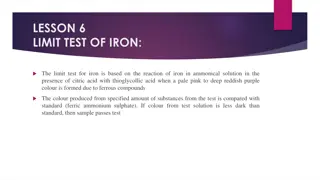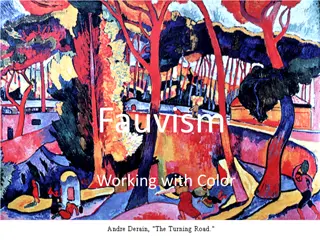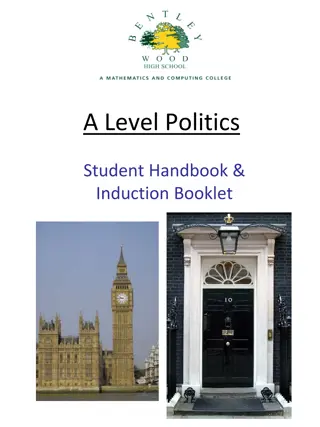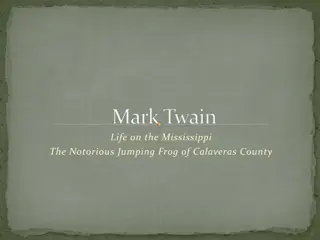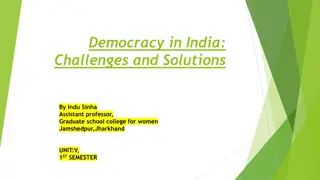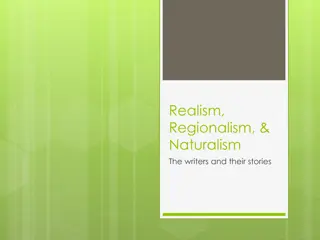Local Color and Regionalism
In-depth analysis of Slovakia's EU membership and climate policy, highlighting the differences in obligations, advantages, ETS details, energy plans, and reporting requirements at both EU and international levels. Includes insights into UNFCCC reporting, EU obligations, and various meetings.
Download Presentation

Please find below an Image/Link to download the presentation.
The content on the website is provided AS IS for your information and personal use only. It may not be sold, licensed, or shared on other websites without obtaining consent from the author.If you encounter any issues during the download, it is possible that the publisher has removed the file from their server.
You are allowed to download the files provided on this website for personal or commercial use, subject to the condition that they are used lawfully. All files are the property of their respective owners.
The content on the website is provided AS IS for your information and personal use only. It may not be sold, licensed, or shared on other websites without obtaining consent from the author.
E N D
Presentation Transcript
Local Color and Regionalism 1865-1895
Definitions Focuses on the characters, dialect, customs, topography, and other features particular to a specific region. Weaknesses may include nostalgia or sentimentality. Customary forms: sketch, short story, and occasionally the novel http://public.wsu.edu/~campbelld/amlit/lcolor.htm l
Purposes Contributed to the reunification of the country after the Civil War. Contributed to the building of national identity toward the end of the nineteenth century. Reassured urban dwellers that amid social change, there was a geographic repository of traditional American values. Satisfied the desire of readers to experience quaint or exotic settings and characters: a kind of travel literature that introduced readers to their own nation.
Characteristics Characters: Concerned character of the district or region rather than with the individual: Characters may become character types, sometimes quaint or stereotypical. The characters marked by their adherence to the old ways, by dialect, and by particular personality traits central to the region.
Characteristics, continued Narrator: The narrator, if present in the tale as a character, is typically an educated observer from the world beyond. Narrator learns something from the characters while preserving a sometimes sympathetic, sometimes ironic distance from them. The narrator serves as mediator between the rural folk of the tale and the urban audience to whom the tale is directed.
Characteristics, continued Setting: The emphasis is frequently on nature and the limitations it imposes. Settings are frequently remote and inaccessible. The setting is integral to the story and may sometimes become a character in itself. Theme: Old ways and traditions versus urban values
Practitioners Regionalism Realism Mary E. Wilkins Freeman Mark Twain Kate Chopin Henry James Charles W. Chesnutt William Dean Howells Sarah Orne Jewett Question: Why is Twain in this column instead of the other one? Bret Harte Hamlin Garland Celia Thaxter Alice Dunbar-Nelson
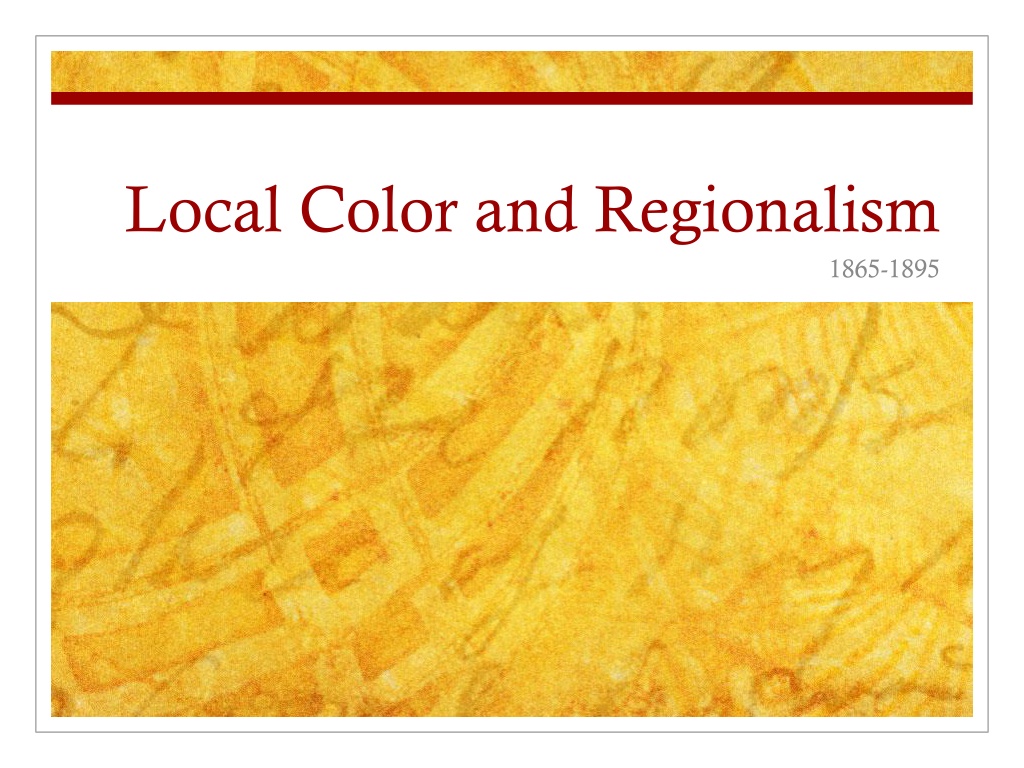
 undefined
undefined













